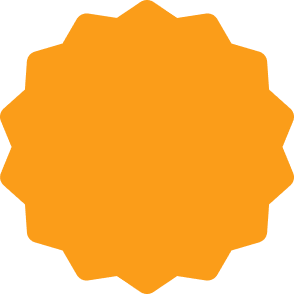What is Cut and Sew?
Cut and sew is a garment production method where fabric is cut into pattern pieces and then sewn together to create a finished piece.
Unlike mass-produced clothing using pre-made templates, this technique allows for custom designs and precise fits. It involves skilled craftsmanship, with designers selecting fabrics, drafting patterns, and assembling garments.
The process offers flexibility for unique styles and high-quality construction. Often used in bespoke or small-batch production, cut and sew ensures attention to detail. This method contrasts with automated manufacturing, prioritizing individuality and precision in garment creation.
How Does Cut and Sew Work?
The cut and sew process is a process that is used to sew raw fabric into wearable garments. It focuses on craftsmanship and customization, and promises to deliver high quality. The following are the main phases:
Design and Pattern Making
Designers start by drawing a garment and making a pattern based on that blueprint. The actual shape of each piece is made from a set of measurements through software drafting. This shapes how the garment will fit and look.
Fabric Selection
Then, appropriate materials are selected according to the design. It also weighs texture, weight and durability. Designers can use cotton, silk, or combinations as desired.
Cutting the Fabric
The fabric is then laid out flat, and pattern pieces are traced onto it. It is important to be as precise as possible to minimize waste. The fabric is either cut by workers or machines along those lines, making components that will be assembled into a garment.
Sewing and Assembly
The cut pieces are now stitched together by hand or by specialized machines. Seams, hems and whatnot, such as zippers or buttons, are added. This is a skill-intensive step to achieve strength, and a neat smooth surface.
Quality Control and Finishing
The garment is then examined for imperfections. Any work additions like pressing or adding labels take place. The outcome is an exclusively designed and sewn quality item.
Advantages of Cut and Sew
The cut and sew process offers a number of advantages over screen printing to create a custom T-shirt. The emphasis on precision and individuality separates it from mass production.
Personalization and Novelty Designs
Cut and sew gives designers the ability to make their own custom garments that can be tailored to what their customers like. The pattern can be easily customized for fit and style, allowing for unique pieces. That flexibility has attracted companies and individuals who want to stand out.
High Quality and Workmanship
Detail is essential throughout the process of design and construction. Experienced makers provide strong stitching and clean lines, resulting in garments that can last at least two years. This next-level attention to detail is what elevates quality above many mass-produced options.
Material Versatility
Designers can choose from a variety of materials, including linen, denim, and silk, to match specific needs. This flexibility serves both aesthetic and functional goals, whether for casual wear or luxury markets.
Small-Batch Production = Less Waste
Cut and sew is ideal for small quantity or made-to-order manufacturing, helping to reduce overstock. With precise cutting and planning, fabric waste is minimized, making sustainability a more realistic goal. This is a win-win for manufacturers and eco-conscious consumers.
Enhanced Fit and Comfort
A custom-fit pattern means better alignment with the body. One example is custom bras, which make the wearer feel more confident and comfortable—especially for those with non-standard sizes. The result is a more enjoyable wearing experience than store-bought clothing.
Examples of Cut-and-Sew Garments
The cut-and-sew technique is utilized across various apparel categories, offering designers control over fit, fabric, and construction. Below is a concise breakdown of its applications:
- Custom T-Shirts
Fabric panels are cut and stitched to create unique patterns or color-block effects, unachievable in mass production. - Athleisure Wear
Leggings, sports bras, and performance tops benefit from precise shaping. Stretch fabrics and accurate cutting enhance comfort and support for optimal movement. - Outerwear
Jackets and coats combine materials like leather, wool, and technical fabrics. Cut-and-sew ensures durability and a high-end, stylish finish. - Children's Clothing
Accommodates diverse sizing and fabric needs. Small-batch production reduces overproduction, meeting specific demands efficiently. - Luxury and Bespoke Apparel
Tailored suits, dresses, and specialty items rely on intricate construction, enabling detailed customization and premium quality.
The cut-and-sew process delivers versatility, quality, and individuality across these garment types.
FAQs
What is a cut and sew business?
A cut and sew business creates custom clothing by cutting fabric into patterns and sewing them into unique garments. It focuses on tailored designs and quality craftsmanship for various apparel types.
Is cut and sew expensive?
Cut and sew can cost more due to custom patterns and skilled labor. Prices vary based on fabric, design complexity, and batch size, but it ensures high-quality, unique results.
How to know if something is cut and sew?
Check for custom-fit designs, unique patterns, or varied fabrics stitched together. Look for precise seams and details that show careful craftsmanship, unlike standard, mass-produced clothing.

























